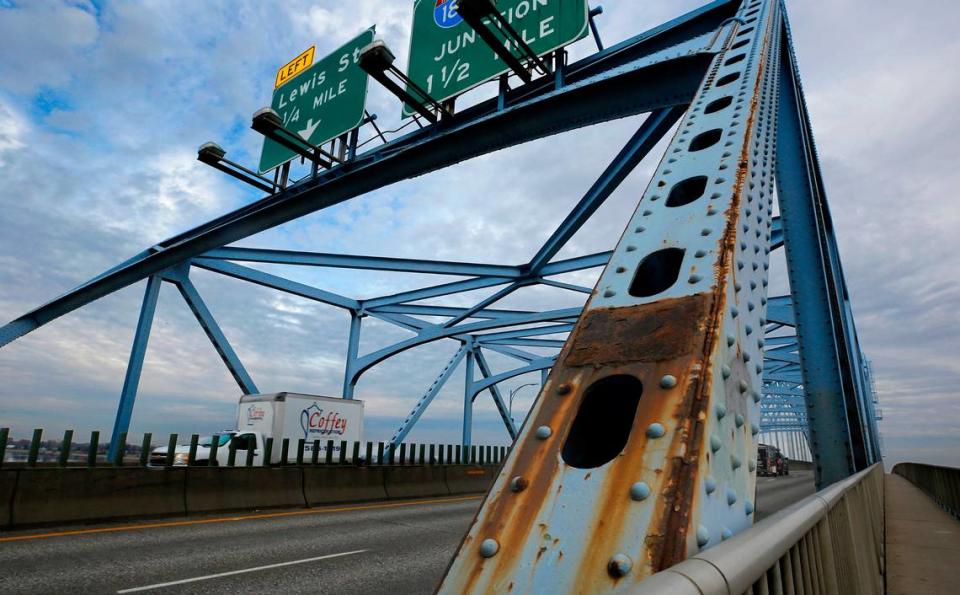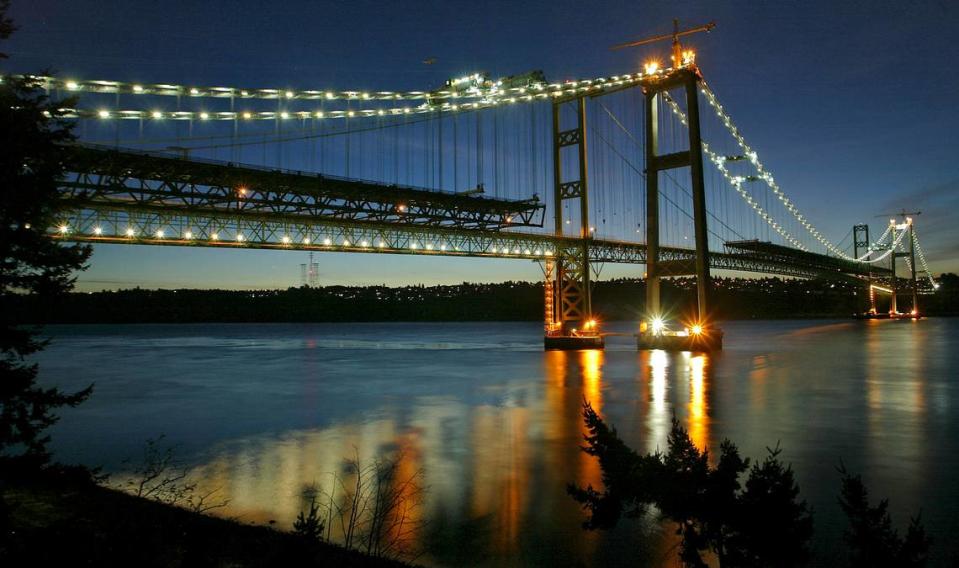There are thousands of bridges in WA. Could a Tri-Cities bridge collapse like Baltimore’s?
Following the tragedy in Baltimore last week, many have been wondering about the potential impacts a similar event could have in their area. Could even a fraction of what occurred at the Francis Scott Key Bridge occur near you?
The Tri-Cities area is also concerned, as there are several bridges in the area that pass over the Columbia River and more, though none are the size of Key Bridge. Regardless, how safe are they, and could a once-in-a-lifetime disaster take place?
Here’s what we know.
Basic information on the Baltimore bridge
The bridge collapsed after a large container ship lost power and hit a primary bridge structure. While the bridge was considered to be in “fair condition” before the incident, and proper alerts allowed for official intervention to decrease the lives lost, there were still multiple deaths.
It has been reported that eight people went down during the collapse, and two were rescued. Two were recovered from the wreckage and the other four are presumed dead. All six deaths were immigrants, part of a late night crew doing construction on the bridge. They were from Mexico, Honduras, El Salvador and Guatemala, according to officials from each country.
Within 90 seconds, traffic to the bridge in both directions was halted, according to coverage by the Associated Press. Dispatch alerted police, who were able to prevent the event from being much deadlier. A police officer told AP that he was going to drive onto the bridge to alert a construction crew, but it was too late.
Engineering experts have since stated that it’s not possible to completely protect a bridge from this sort of catastrophe. In other words, there isn’t a single bridge that could remain unfazed under these circumstances.

Bridge safety in Washington state
Even so, how would our bridges do? Are they safe?
The Washington State Department of Transportation estimates there are around 7,300 bridges in the Evergreen State. Each is inspected on a regular basis by the department, generally once every two years.
A bridge’s condition is ranked either good, fair or poor:
Good: No problems, up to minor deterioration of structural elements
Fair: Sound primary structural elements, deficiencies like minor section loss, deterioration, scour, spalling, cracking
Poor: Advanced deficiencies, seriously affected primary structural components. May have posted truck weight restrictions, but is not unsafe for travel.
But even bridges with a ‘poor’ ranking could withstand impact to a certain degree.
“A bridge in ‘Poor’ condition does not mean the bridge is unsafe for travelers or in danger of collapse,” stated Meagan Lott, a regional communications director for WSDOT, in an email to the Herald. “Bridge inspectors have authority to close or restrict any bridge deemed unsafe at any point during an inspection.
Even so, there are only a handful of bridges with ‘poor’ rankings in the Tri-Cities area:
Glade Creek Bridge 14/306
Gap Road over I-82
Chandler Canal Bridge 82/213N
Yakima River Bridge in both directions 82/215
Are Tri-Cities bridges at risk?
On top of the routine inspections and safety parameters already in place, travelers in Washington can feel at ease with bridge travel knowing we deal with much smaller cargo ships.
The cargo ship in Baltimore, the Dali, is 985 feet long and 157 feet wide. It moves quickly, and paired with the power malfunction, took down the bridge. While cargo ships are present in Washington, including around Tri-Cities, they are much smaller.
Even when traveling under our bridges, they don’t have the capacity to do damage like the Dali.
“Safety is paramount and it’s top of mind when in the transportation industry,” DOT’s Lott stated. “The smaller vessels traveling under bridges in the Tri-Cities are too small to have an opportunity to hit any of our bridges so it’s not something we are concerned about.”
In case of emergency, the Coast Guard is constantly tracking vessels in our waters, and can act as emergency responders when necessary.
Altogether, it is very unlikely that something similar to the bridge collapse in Baltimore would happen in the Tri-Cities region.

Vulnerable Washington bridges
However, the Wall Street Journal identified eight bridges across the country that may collapse in the event of a single steel component failure, with two right here in Washington state.
These are the Tacoma Narrows Bridge and the Lewis and Clark Bridge connecting Oregon and Longview, Washington, both hours from Tri-Cities.
WSDOT communication managers for both areas confirmed that WSDOT is following developments in Maryland, looking for any potential lessons learned from the event. This is done with any emergency event, and can lead to applications in state protocols and procedures.
Both communication managers also confirmed that the set of circumstances leading to the bridge collapse are not present in their area, due to the size of the vessels.
“WSDOT’s thoughts are with everyone affected by the tragic bridge collapse in Baltimore, Maryland,” stated Kelly Hanahan, assistant communication manager for WSDOT’s southwest region, in an email to the Herald. “This tragedy is a reminder of the dangers roadway and maintenance crews face working on transportation infrastructure as well as the need to safeguard everyone on roads and bridges.”
Hanahan also stated that WSDOT works with first responders and emergency managers like the Coast Guard to train for emergency situations.
“It is impossible to prepare for every eventuality, but by training and building these relationships we’re better able to respond and adapt when needed,” Hanahan stated.

